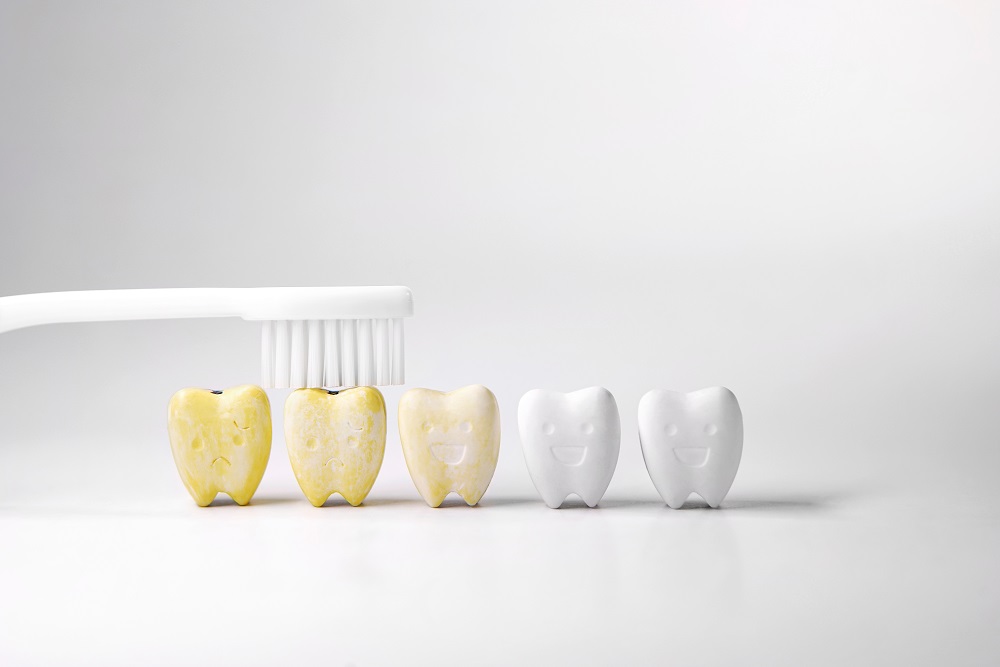You’ve just finished a teeth whitening near you with those promising whitening strips you bought from the pharmacy, expecting a brilliant, white smile. However, as you look at your teeth in the mirror, you unexpectedly realize that they now appear more yellow than before. It’s essential to comprehend the potential causes of this before you start to freak out or second-guess the choice you made. In this blog post, we’ll delve into the reasons behind this counterintuitive outcome.
What are Whitening Strips?
A typical over-the-counter dentistry product known as whitening strips is intended to assist in improving the appearance of teeth by lighting their colour. The material used to make these strips is often thin and flexible and is coated in a tooth-whitening gel containing a bleaching chemical, commonly hydrogen peroxide or carbamide peroxide.
How They Work
The way that whitening strips function is by carefully applying a bleaching substance to the surface of the teeth. By dissolving and releasing oxygen molecules, the peroxide in the gel effectively removes stains and discolouration by penetrating the enamel and dentin of the teeth.
Effectiveness
- Depending on the individuals, strips for teeth whitening in Newmarket may or may not be effective. Deep-seated stains can be removed less successfully than surface stains.
- The level of whitening obtained depends on the bleaching agent’s concentration in the gel and how often you use the strips.
- Results can last for several months, but over time, factors like diet and oral hygiene may cause teeth to regain some of their original color gradually.
Reasons Why Teeth Appear Yellowish After Using Whitening Strips
Initial Sensitivity and Redness
Your teeth may appear yellower after using whitening strips for several reasons, one of which is the initial discomfort and redness they may create. In order to eliminate stains from the enamel, whitening strips often contain peroxide-based whitening chemicals. They may irritate the gums during this process, resulting in momentary redness and inflammation. This redness can create a visual contrast that makes your teeth look more yellow in comparison.
Tip: After using whitening strips, give your gums some time to heal. During this time, stay away from foods and beverages like coffee and red wine that can discolour your teeth.
Dehydration of the Teeth
Teeth can become temporarily dehydrated after using whitening strips. Your teeth may appear more yellow as a result of this dehydration because the enamel may become dry and lack moisture. Dehydrated enamel sometimes has a transparent appearance that makes the naturally yellowish dentin underneath visible.
Tip: Drink water before, during, and after using whitening strips to stay hydrated. Your teeth’ temporary dehydration can be avoided in this way.
Uneven Whitening
Uneven whitening can be another factor contributing to the yellowish look. The consistency with which whitening strips cover your teeth could cause differences in the shade of your smile. Some patches may stand out as yellower in comparison to the brighter parts if they undergo less whitening treatment.
Tip: To reduce the possibility of uneven whitening, make sure you apply the whitening strips evenly to your teeth and carefully follow the directions.
Stain Removal and Tooth Sensitivity
While whitening strips are effective in removing surface stains, intrinsic stains—those that are embedded in the tooth’s structure—may not be completely removed. Intrinsic stains can often be more challenging to remove and may need professional assistance from a dentist in Newmarket. Your teeth may appear more yellow due to the contrast between the deeper intrinsic stains and the whiter surface.
Tip: To learn the cause of intrinsic stains and discuss possible treatments, consult with a dentist.
Colour Perception
Our sense of colour can have a significant impact on how white we think our teeth are. Your teeth could not actually be more yellow; instead, the way they look could be caused by alterations in lighting, the environment, or the colour of your teeth.
Tip: For a more accurate evaluation of your outcomes, take pictures of your teeth in constant lighting both before and after using whitening strips.
Safety Considerations
- When used as instructed, whitening strips are usually considered safe. However, some people might have gum irritation or tooth sensitivity. It is advised to cease using it and see a dentist near you if these problems arise.
- It’s essential to follow the instructions on whitening strips strictly and to stick to the recommended usage duration. Overusing them might cause dental discomfort or damage to the enamel.
Enhance Your Smile with Professional Whitening Treatment
At Keep 28 Dental Centre, we take pride in being your reliable dental care partner, with over 35 years of dedicated service. Our uncompromising dedication to quality ensures you receive optimal care personalized to your dental needs. Our experts offer safe and effective teeth-whitening treatments to help you achieve the smile you always wanted.
Give us a call or click “Schedule an Appointment” below to book your teeth whitening treatment and make your smile shine bright!

